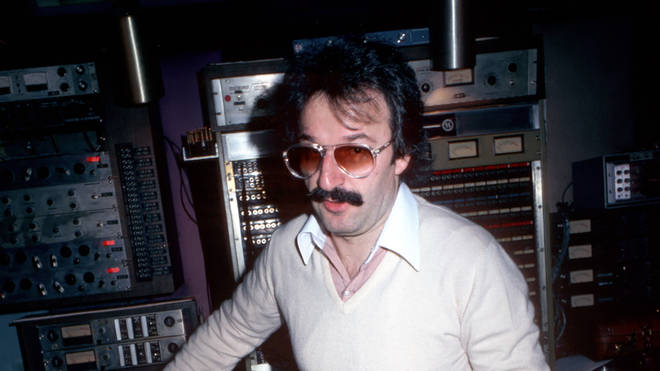
In 1984, with the aid of the Munich Film Archive, musician and producer Giorgio Moroder oversaw the most complete restoration of Fritz Lang’s Metropolis (1928) at that time. Moroder intended only to write and produce a new score for Lang’s masterpiece but went much further. Footage from different surviving prints was cobbled together to make a longer version of Metropolis that, as far as Moroder and his collaborators could tell, was much closer to Lang’s intent than the prints that had been circulating. However, in a controversial move that polarizes fans of Metropolis to this day, Moroder added new special effect, deleted title cards and burned in subtitles.
Moroder’s version of Metropolis has since become the stuff of legend in both film and music circles. From the project’s conception as a vehicle for David Bowie to the premiere of Moroder’s new cut, Metropolis wasn’t just another presentation of a “lost” silent classic, it was a cultural event. Years prior to Moroder’s involvement with Fritz Lang’s Metropolis, Francis Coppola had thrown his resources behind a new version of Abel Gance’s epic masterpiece Napoléon (1927) which sparked a revival of silent cinema. In the late seventies and early eighties it was suddenly as chic for celebrity artists to curate a new version of a classic film as it was to be doing cocaine.
Through the years Moroder, separate from Metropolis, contributed a number of classic theme songs and scores to the pantheon of popular movies. From his theme song for Paul Schrader’s Cat People (1982) to the powerful anthem for The Neverending Story (1984) Moroder was shaping the landscape where cinema and pop music meet. Moroder’s songs and music for Lang’s science fiction tale of a dystopian future owes as much to the early synth scores of the mid-seventies as it does the Billboard top 100 of the time.
The sounds of Metropolis are a synthesis of styles boosted by a “who’s who” roster of hit-making performers. Freddie Mercury, Bonnie Tyler, Adam Ant, Pat Benatar, and Jon Anderson are among the most famous names to lend their voices to Moroder’s Metropolis. As a record separate from Lang’s images the soundtrack album for Metropolis is a kick-ass mixed tape. The record shows off beautifully Moroder’s strengths as a producer, composer and arranger, particularly on Bonnie Tyler’s number “Here She Comes”. The Pat Benatar track “Here’s My Heart” is another standout number.
But these songs in conjunction with Fritz Lang’s film never really works. At times it is the music that carries the viewer’s attention while on other occasions Lang’s images do all the work in spite of the music. Sound and image rarely feel as one in Moroder’s film. The experience of watching Moroder’s Metropolis is akin to watching early MTV late at night. For true optimal enjoyment one should probably be high when watching this version of Metropolis.
So why do I love Moroder’s Metropolis? This question can be answered with one word: kitsch. Essentially the pop culture of the 1980s has invaded one of the greatest cinematic achievements of the silent era for no other reason than to bolster the status and ego of one of the richest record producers of the day. The entire project could easily have been an offhanded joke in a Mel Brooks or John Waters movie, but it isn’t. This really happened and it really exists.
